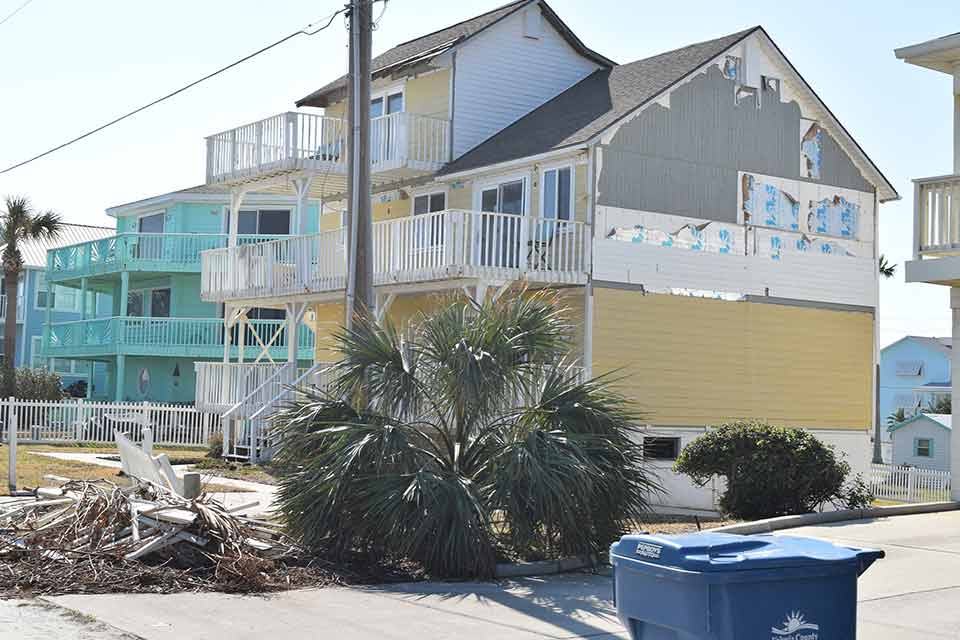Insuring Your Home in New Smyrna Beach
Insurance Tips and Insights
The past year has been a whirlwind for the real estate market and in many cases, sellers are getting the price they want for thir home. However, what happens if a buyer runs into trouble binding insurance? Trouble can come in many forms, varying from outrageous premiums to problems on a four point inspection which limits the carriers willing to insure a property. The fact of the matter is, in most coastal communities the vast majority of homes are not new construction. In the more charming historic districts, homes may be 100 years old. On the barrier island in New Smyrna Beach, a huge portion of homes are 1950-1980. Obviously construction standards have changed, but so have insurance standards. Did you know that certain wind and peril carriers will not insure a roof over 10 years old? That’s right, they want you to replace your roof every 10 years or risk being dropped. This is a reason why it’s very important to work with an insurance broker that has many carrier options and is savvy in useful life of home systems that may cause problems for renewals or claims.

A four point inspection is a document required for most homes that are not newer construction in order to bind insurance coverage. It's called a 4 point because there are four systems that are of concern to insurers: Electrical system, heating/cooling system, plumbing system, and roof. In my experience, the two most common issues on 4 point inspections are the roof and the electrical systems. Some carriers will not insure a roof over 10 years old, some carriers work primarily off of estimated useful life. The "useful life" that a carrier gives a certain type of roof material varies from carrier to carrier. The useful life that a roofer will quote to the homeowner will almost always be longer than what an insurance carrier will estimate. For example, most roofers will tell a homeowner that architectural shingles have a 25-30 year useful life. Most insurance carriers, are now using 15-20 years as estimated useful life for architectural shingles. Five years ago metal roofs were given a 40 year lifespan, now they are 25 in the eyes of insurance carriers. Remember that my market it coastal Florida. Coastal Florida within 10 miles of the ocean is underwritten differently than inland Florida. It's also important to note that inspections contain photos. If the roof has obvious deficiencies in the inspection photos, estimated useful like will be reduced.
Absolutely. Insurance carriers have a 60 day underwriting (or second look) period after you bind coverage. Typically, an insurance carrier will send someone out to the house to walk around the outside or do a basic inspection of the inside after closing. I just had a client get dropped from their insurance a month after closing because the inspector came out and noted "granulation" on the roof. A roof, mind you, that was 2 years old and architectural shingles with a supposed 25 year life. They were able to secure coverage with a different carrier. Some carriers just prefer to minimize risk by opting out of certain areas.
The best way to look at a wind mitigation report is like a coupon that you have to earn for discounted rates on your property. The wind mitigation form covers building code year, roof covering, roof attachment system, roof underlayment, and glazed and non glazed openings (i.e. windows and doors). You'll hear the term "impact windows" thrown around a lot in coastal Florida. Impact windows and doors can grant big discounts on a wind and peril policy, but every single opening has to be impact rated. Some homeowners are under the impression that double pane windows are impact resistant for the purposes of insurance. They are not. Here's a link for a commonly used impact window and door brand in Florida for more details. Remember that when you hire a licensed inspector to complete a wind mitigation report, it is not a pass or fail type of reporting. It's merely a 'which discount do I qualify for'.
Unfortunately, there are several items that might entirely prevent a homeowner from binding insurance. I'll use a recent situation I had as an example. I was the listing agent on a home on the island aka beachside, and we found out in our first inspection that the home had cloth wiring present. We had an electrician come out and complete a repair per local building code that made the cloth wiring safe and code compliant. The buyer went to bind coverage. Not a single carrier would touch it even with the repair and sign off from a licensed electrician. We did find one carrier that would insure it, BUT they had opted out of the neighborhood because they had too many policies in that area (minimizing risk). Five hours and countless brokers and carriers later, we found another one that would take it, BUT this carrier didn't like the modified butimen roof system. They ended up binding it but for the cost of around triple what the policy would be if updated wiring were in place. Remember that carriers still have a second look period so this homeowner may end up having to replace the wiring anyway. What is "safe" from a building code standpoint is not always insurable from a carriers risk analysis.
This depends of a few factors. If you are financing the property then your lender will likely require the most comprehensive policy called an HO3. So the only way to get this is by cleaning up the 4 point. Either the seller needs to complete the repairs so that your inspector can make the required changes to the form or you will have to complete the repairs after closing usually within 30 days. If you fail to complete the repairs the carrier can and likely will drop you. Most carriers require a signed work order showing the intent and scheduling of the repair in question. If you are paying cash, you can close without insurance and hurry to complete the repairs yourself (not recommended) or you can go with a less comprehensive policy called an HO8 until you have fixed the required repairs to bind an HO3. I am not a licensed insurance broker so for more details on what these specific policies cover, please refer to an insurance broker.

